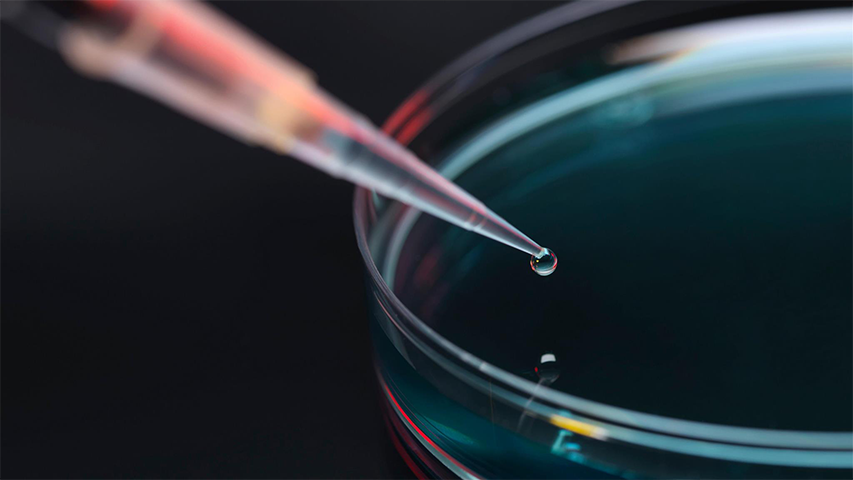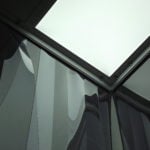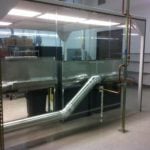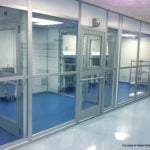Cleanroom and Air Flow Designs for T Cell Therapies
Modular cleanrooms allow adaptation when regulatory changes increase environmental requirements, or for when a facility requires multiple cleanroom classifications within the same facility. Segmenting cleanroom operations is a cost saving measure, as working in a cleanroom that’s “too clean” dramatically increases operating costs. As we can see, the difference between an ISO 7 cleanroom and ISO 8 requires nearly twice the air velocity and twice the air changes per hour.
By partitioning the cleanrooms for less critical processes, facilities can cut energy costs by 25 – 50% with the same amount of floor space. This also reduces operator compliance minimums for gowning, cleaning costs, and tightens security access controls which are generally less necessary in dirtier spaces.
Cell Culture Laboratory Equipment
A cell culture laboratory must maintain an aseptic work area. Laminar flow hoods, glove box isolators, and biological safety cabinets allow a high degree of engineering control. Flow hoods push contaminants outward from the samples under positive pressure to protect the product, while negative pressure designs intake room air and vent it through an exhaust to protect the user. Glove box isolators provide the highest degree of product and personnel protection with an externally vented closed loop system.
The choice of a flow hood is generally designated by the risk and sensitivity of a process. Sterile and hazardous chemicals require external exhaust and a pressure design that prevents hazards from leaving the room in the case of a spill or accident. Non-sterile, non-hazardous drugs don’t require dedicated external exhausts. The environment is designed for the safety and integrity of the product, operator hazards are rare.
Flow Hoods and Isolators for Microbiology Cleanrooms
C-PEC (Primary Engineering Control)
Containment Primary Engineering Control; Examples of C-PECs include Class I, II, or III BSCs, CACIs, and CVE. It’s the device in which the compounding will occur. A ventilated device designed and operated to minimize worker and environmental exposures to HDs by controlling emissions of airborne contaminants.
C-PECs used for nonsterile compounding do not need to have ISO Class 5 air quality. C-PECs used for sterile compounding shall have ISO Class 5 air quality.
C-SEC (Secondary Engineering Control)
Containment Secondary Engineering Control; the room in which the C-PEC is placed. The C-SEC is the room in which the C-PEC is placed. It incorporates specific design and operational parameters required to contain the potential hazard within the compounding room (e.g., restricted access, barriers, special construction technique, ventilation, and room pressurization are components of the secondary control strategy).
CAI Compounding Aseptic Isolator (CAI):
An isolator specifically designed for compounding sterile, non-hazardous ingredients or preparations. A CAI shall not be used for the manipulation of hazardous drugs (HDs).
Compounding Aseptic Containment Isolator (CACI)
Compounding Aseptic Containment Isolator; a specific type of CAI that is designed for the compounding of sterile hazardous drugs. Ventilated outside of the building. Only a CACI is used for compounding hazardous drugs, not to be confused with a CAI which is only used only for non-hazardous drugs.
Cleanroom Airflow Systems for Microbiology and Cell Culturing
The advantage of modular fan filter units over traditional air handling units is that air input and output sources are decentralized. Increasing the cleanliness of the room by adding more fan filter units is adaptable by the nature of a T-grid mounting system. Modular fan filter systems reduce static filter loads when a space requires a high volume of air changes per hour or when the current HVAC system is inadequate for air delivery.
A positive pressure design prevents cross-contamination between product areas and adjacent spaces. This provides a pressure cascade that pushes clean air outward, thus preventing any cracks, seams, conduits, or entryways from introducing dirtier air from adjacent spaces.
Gel Seal Pharmaceutical Filters
Pharmaceutical style fan filter units are ideal for manufacturing medical devices and other highly regulated products. A gel channel on the upstream side of the final filter prevents leaks between the filter and the housing. Gaskets and rubber seals are particularly problematic in positive pressure designs. Compromised seals are difficult to trace and monitor. Over the lifetime of a HEPA filter, trapped contaminants restrict air flow and slowly reduce air flow through the filter media. This causes an increase in static pressure known as filter loading.
Counterintuitively, a HEPA filter actually becomes more efficient in capturing smaller particles as it gets dirtier, but much less efficient at air throughput. Particles clog media fibers which increase the likeliness that smaller particles impact the filter media. These fan filters provide the capability for an average air flow velocity of 90 FPM, which provides a future-proof solution which can achieve up to an ISO 3 (Class 1) validation by expanding ceiling coverage.
One key advantage of a pharmaceutical style filter is that it’s replaceable from within the cleanroom. This is also referred to as a “cleanroom-side” filter. The advantage of this design is that a filter is replaceable without requiring access to space above the cleanroom. Maintenance is possible without building catwalks or top side access points.
Fan Filter Control Units
CleanPro® fan filter unit control systems power fan filter units from a remote console or panel. Linked individually or in groups, an operator can increase or reduce airflow to a selected area and utilize the set back feature during off-peak hours, resulting in lower operating costs. These are reasonably priced fan filter control systems which use standard 115V and 277V motor blower units without using high-cost DC motors.
Managing Electrostatic Attraction (ESA) During Cleanroom Decontamination
If a critical product surface becomes charged, the surface attracts airborne particulates in the cleanroom. Regardless of the filtration system, personnel, machinery, and processes can introduce particulates into the air. The ESA affecting these particles is surprisingly strong. Once bonded to a charged surface, it is very difficult to remove the contamination. Cleanroom airflow will not have enough force to remove it. Contamination of this nature is the major contributor to product degradation and rejection in Life Sciences and silicone-based product manufacturing.
All air ionization systems work by flooding the atmosphere with positive and negative ions. When ionized air comes in contact with a charged surface, the charged surface attracts ions of the opposite polarity. As a result, the static electricity that has built up on products, equipment, and surfaces are neutralized. Simco-Ion provides an in-depth explanation of each type of ionization method here.
Find a Cleanroom Construction Expert
Find Expertise
Related Posts
-
CleanPro® Softwall Cleanroom Curtains Installation
Softwall cleanroom curtains, sometimes referred simply as “plastic strips” yield ISO Class 10,000 level particle control with minimal construction. This customer required a custom softwall installation that integrated into their existing building structure CleanPro to…
-
USP <800> Compounding Cleanrooms
Updated: USP 800 is a cleanroom standard issued in March of 2014 by the United States Pharmacopeial Convention (USP). The deadline December 2019 for compliance may change.
-
CleanPro® Softwall Cleanroom Enclosure
This customer needed to enclose a piece of machinery, and CleanPro® was able to provide a solution.
-
CleanPro® Turnkey Cleanroom Install
CleanPro’s turn-key cleanroom solution provided a one-stop, one-contact result for the initial delivery and on-site installation of walls, ceiling grids, electrical systems, flooring, filters, HVAC, and more.
-
Cleanroom Components — Air Filtration, Design, and Other Variables
What are the key determinants of cleanroom components? Learn about different types of cleanroom filtration, wall construction, lights, temperature, humidity and more.
-
Cleanroom Components — Air Filtration, Design, and Other Variables
What are the key determinants of cleanroom components? Learn about different types of cleanroom filtration, wall construction, lights, temperature, humidity and more.









